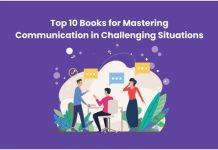We live in a time when learning options have become as diverse as societal needs. With remote learning becoming an option for nearly everyone now, blended learning is slowly becoming one of the most sought-after education and learning option.
Blended learning is a system where traditional learning principles are supplemented with online technological facilities to foster greater learning. Therefore, throughout the academic year, students get to use a hybrid integration of online and offline education.


This article will highlight the factors of blended learning that make it standout when compared to traditional-only learning practices of the past. Though the traditional practices have done quite well in producing the sharpest and the most brilliant minds of the past, change, though, is inevitable and new learning opportunities promise to bring greater advancements.
Before we get into why we think blended learning trumps traditional learning, let us make a clear distinction between blended and e-learning practices.
Blended learning vs. E-learning
Blended learning is an educational concept that recommends learning be promoted through traditional and as well as electronic means to make for a more holistic learning experience.
This could include the use of technology in classrooms, or learning via mobile phones, computers, or tablets for remote learning.
However, e-learning is a learning practice where the majority of teaching is delivered online only. For example, during the initial lockdown phase of the pandemic, when educational institutions had to be shut down, most students had to take to e-learning.
As a contemporary teaching instructor, it would be best if you take advantage of online learning and get the hang of it as soon as possible. With a C&I Instructional Coach Leadership Master’s, you get to learn about the diverse teaching strategies that can be incorporated to make sure the students benefit from aspects of integrated learning.
For delivering your best on blended learning, you must be aware of the different teaching strategies that go into teaching on these diverse platforms.
Blended learning gives easier accessibility
Traditional classroom-based learning brings with it its fair share of struggles. We don’t realize that there are several factors that can affect learning apart from the problem of making it to school. For students who don’t have access to conveyance, lack resources, or simply have attachment issues, blended learning may be a more viable option.
There is so much more than meets the eye when evaluating blended learning, and educators need to realize that the schools cannot hold everyone to the same standards of competence, behavior, or learning. No system of education is a one-size-fits-all solution.
There is an issue of discrimination and equity when we consider the plight of students, obliged to attend school no matter what, who find it hard to integrate into the social life and culture of the school. The stress can only be fathomed by these students themselves and their parents.
The average American family owns at least one smart device that the students can take to the class. Moreover, coming to school a few times a week is considerably a lot more manageable, stress-wise, than 5-days a week, 4-weeks a month.
Better for differently-abled students
Not all students can absorb content in the same way. Some students are slower, while others pick concepts quickly, and still others prefer visual and multimedia stimulation.
Therefore, students in the blended learning systems are more likely to understand concepts better than those in traditional schools, since they’re aided by technology-based learning which uses visual and auditory tools for increased learning. These advanced strategies also help the differently-abled students bridge the learning gap quickly and come on par with the other students of the class.
Traditional schools do not have the resources to make accomodations for diverse learning in their classrooms. Apart from special schools, the average American schools facilitate the fully-functional, star pupils in a bid to accrue more funds from wealthy donors.
More appropriate for post-pandemic lifestyle
The measures we are taking to avoid social gatherings, however, cannot last indefinitely, and at some point or another, physical gatherings are going to resume. Given the other benefits that we stand to enjoy from blended learning, i.e., the freedom to come to class only a few days of the week, make it more attractive as a study option for students and teachers.
As things stand now, with the COVID protocols firmly in place, we have no other option but to continue with blended learning and e-learning to reduce the risk of virus transmission.
Hundreds of countries around the world, in ensuring that the students’ education doesn’t take a hit because of the enforced social-distancing measures, are opting for blended learning.
Far more convenient than traditional learning
We often forget that comfort can be a facilitating factor when it comes to absorbing content. Having the freedom to take things at your own pace, sitting in the familiar comfort of your own home, can make you a better learner.
Students are naturally in a better headspace when studying at home and are likely to be more receptive to the content being delivered through online lectures.
Teachers, too, are slightly more relaxed when giving online lectures. A stressed-out teacher can find it harder to deliver inspiring lectures designed to foster curiosity in students. But with blended learning, they can, for a few days of the week, kick back and relax, and take things at an easier pace; delivering lectures while enjoying a warm beverage in their hand. Lecutring online can be a breeze as compared to the traditional classroom lectures where one’s voice is drowned in all the commotion.
Simply having one or two online days a week can make the working week considerably more manageable.
Though student-centered education strategies are commendable and welcome steps toward enhancing learning, the role of the teacher is also significant and their interests and needs shouldn’t be neglected in the process.
Conclusion
Blended learning doesn’t stand diametrically opposed to the traditional learning system, but advocates a blending of online, technologically-heavy learning options with the more traditional options at hand. The ease of accessibility, comfort, ability to be molded to the needs of the students and teachers, make it a necessary option for the changing needs of our times.
















